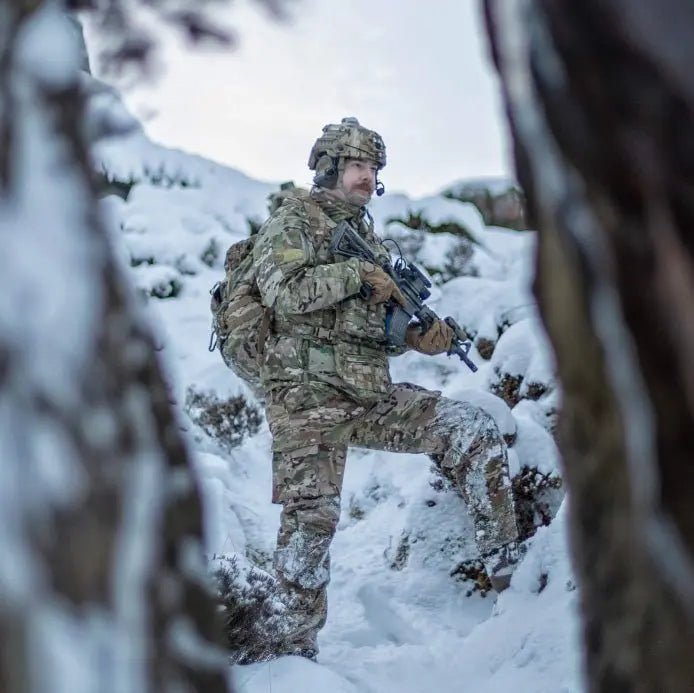In the dynamic landscape of modern warfare, adaptability is key. As the British Army continues to evolve, so does its approach to concealment and tactical advantage. One of the pivotal developments in this realm is the implementation of the Multi-Terrain Pattern (MTP) camouflage - This revolutionary pattern not only signifies a visual transformation for soldiers but also represents a strategic leap forward in the art of blending into diverse environments seamlessly.
The Evolution of Camouflage
Camouflage has been an integral aspect of military strategy since its inception. The British Army has a rich history of employing various camouflage patterns to suit different terrains and operational requirements. The evolution from Disruptive Pattern Material (DPM) to Multi-Terrain Pattern (MTP) is a testament to the commitment of staying ahead in the ever-changing landscape of conflict.
Multi-Terrain Pattern (MTP)
So what does MTP stand for in the army, well quite simply the it's the camouflage pattern the British Army use and expect all soldiers to wear in training and in combat. Introduced in the early 2010s, MTP or full name Multi-Terrain Pattern is a versatile and adaptive camouflage pattern designed to provide effective concealment across a range of environments. The pattern is a blend of earthy tones, including brown, green, and tan, strategically arranged to mimic the colours found in both woodland and desert terrains. This dual-purpose design allows soldiers to seamlessly transition between diverse operational landscapes without the need for frequent uniform changes.
The Science Behind MTP
Multi Terrain Pattern's success lies in its ability to disrupt the human silhouette and blend into the surrounding environment effectively. The pattern incorporates a combination of small and large pixelated shapes, creating a visual illusion that confuses the observer's eye. This disruption, coupled with the carefully chosen colour palette, ensures that soldiers wearing Multi Terrain Pattern remain concealed in a variety of settings, from dense forests to arid deserts.
Adaptability Across Environments
The strength of Multi Terrain Pattern lies in its adaptability across a wide spectrum of terrains. Whether navigating dense woodlands, arid deserts, or urban environments, soldiers clad in MTP can confidently traverse these diverse landscapes without compromising their concealment. This adaptability not only enhances the effectiveness of military operations but also reduces the logistical burden of constantly changing uniforms based on the operational theatre.
Operational Effectiveness
The implementation of MTP is not merely a cosmetic upgrade; it directly contributes to the operational effectiveness of the British Army. The improved concealment allows soldiers to move more covertly, increasing their chances of surprise and reducing the risk of detection by adversaries. In the unpredictable and asymmetrical nature of modern warfare, the advantage of remaining unseen is a crucial element in achieving mission success.
As the British Army continues to embrace innovation and evolve its tactics, the adoption of the Multi-Terrain Pattern (MTP) camouflage stands out as a significant milestone. Beyond its aesthetic appeal, MTP represents a strategic investment in the operational effectiveness of the armed forces. The ability to seamlessly blend into diverse environments provides soldiers with a crucial edge, underscoring the importance of staying ahead in the ever-changing landscape of military technology and strategy. In mastering the art of concealment through MTP, the British Army exemplifies its commitment to adaptability, efficiency, and success on the modern battlefield.

